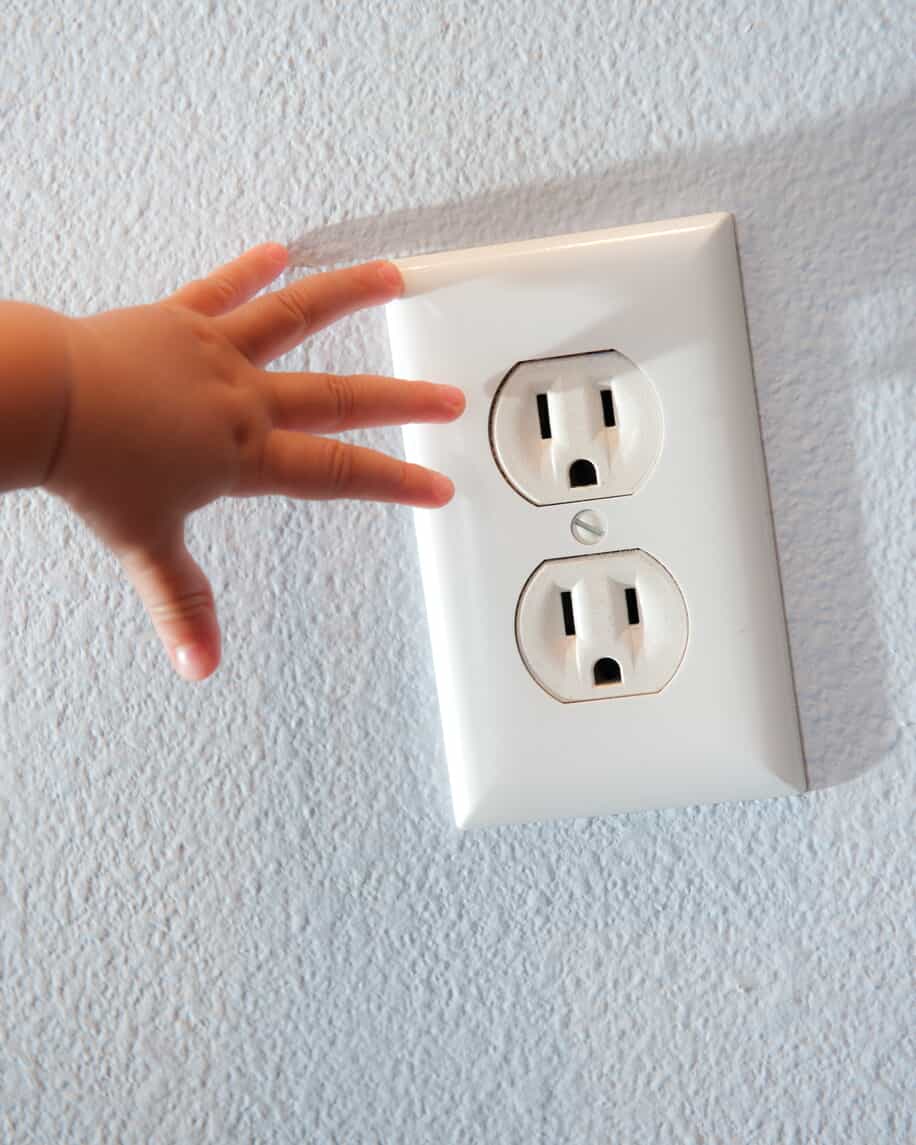How To Baby-Proof Your Home’s Electrical Outlets
Are you a mom or dad to little ones? Or do you often have friends and family with children visiting your home? If that’s the case, it’s paramount that you baby-proof your outlets at home. Unfortunately, these incidents are far too common.
Thousands of children hurt themselves every year by inserting objects into outlets, sticking their little fingers in them, or getting wrapped up in electrical cords. According to the U.S CPAC (Consumer Product Safety Commission), over 24,000 children were sent to the ER because of unprotected outlet incidents over a ten-year span. All kinds of outlets are dangerous because there is a short space between the conductors and the plastic cover.
Although baby-proofing can be overwhelming, it's well worth the effort. To help you parents relax and feel less stressed, we’ve written this blog to help you understand not only why babyproofing is important, but everything you need to know about babyproofing your home.
Familiarize Yourself With Your Electrical Outlets
Did you know that so far there are 15 different kinds of electrical outlets on the planet officially recognized by the U.S. ITA (International Trade Administration)? In the United States, it’s customary to use the “A” and “B” types of outlets. The “A” outlet type is identified by its two prongs, and the “B” outlet type has three prongs. Being the most popular these days, the following are popular safety options for your “B” type outlets.
GFCI OUTLETS (Ground-Fault Circuit Interrupter) outlets can significantly lower the possibility of an electric shock. GFCIs monitor the flow of electricity through wires, and when the device senses any variation from the usual current, it shuts off the flow of electricity to the outlet completely.
AFCI OUTLETS (Arc Fault Circuit Interrupter) outlets work something like GFCI outlets. They work by keeping arcs from forming in your electrical system.. When damaged wires don’t connect properly, an arc fault happens when there’s a spark. Arc faults are fire hazards and should be taken seriously.
Try Outlet Covers
A simple way to keep your child away from harm is installing outlet safety covers on you outlets. The covers will keep kids from putting their fingers or foreign items into the electrical sockets. Additionally, try to keep all electrical wires out of their reach. There are different types of outlet covers such as the standard plastic cover you may see often. A screw-on plate can also be used, which attaches directly to the outlet.
Tips For Babyproofing Electrical Cords
Now that you have protected your children with outlet covers, remember that it’s likely that you’re using many of these outlets, which means children have access to electrical cords. Think of your entertainment systems, phone chargers, toasters, vacuums etc.
Children can use cords to find an outlet, get a wire wrapped around themselves creating a choking hazard, chew on the cord suffer an electric shock, or trip.
What can you do to keep them away from your child?
Use furniture and other larger household items to form a barrier around your electrical cords.
Buy a cord-shortener or cover which will give you a receptacle to store your cords.
Tape or otherwise adhere your cords to the floor. You can also cover them with carpets.
Tips For Babyproofing Power Strips
Invest money in a power strip cover. These covers are designed with an opening on the side which will allow the cords to come through uninterrupted. You may also choose to use plastic outlet covers on the outlets on a power strip.
Educate Your Child on Electrical Safety
While they are babies, children will only understand basic electrical safety instructions. But as they get older, make sure to continue to teach them about safe practices when dealing with electricity. Here are a few things you can do to build a foundation for electrical safety in your home:
Avoid plugging and unplugging appliances or devices while your children watch.
Don’t place their toys or other colorful looking items near electrical outlets.
Make sure they have clear boundaries about who’s aloud to unplug or plug in electrical appliances or turn on lamps or other devices.
Don’t leave electrical devices plugged in when you’re done with them.
Allow your children time to use electrical devices under adult supervision.
Final Thoughts
Our team at Tru-Line Electric cares deeply about your family’s safety. We’re not only here to help you make repairs and installations in your home, but to provide needed electrical safety device and preventative maintenance options. If you’re curious about your options when it comes to electrical safety in your home, schedule an appointment with us! We’re happy to help.


